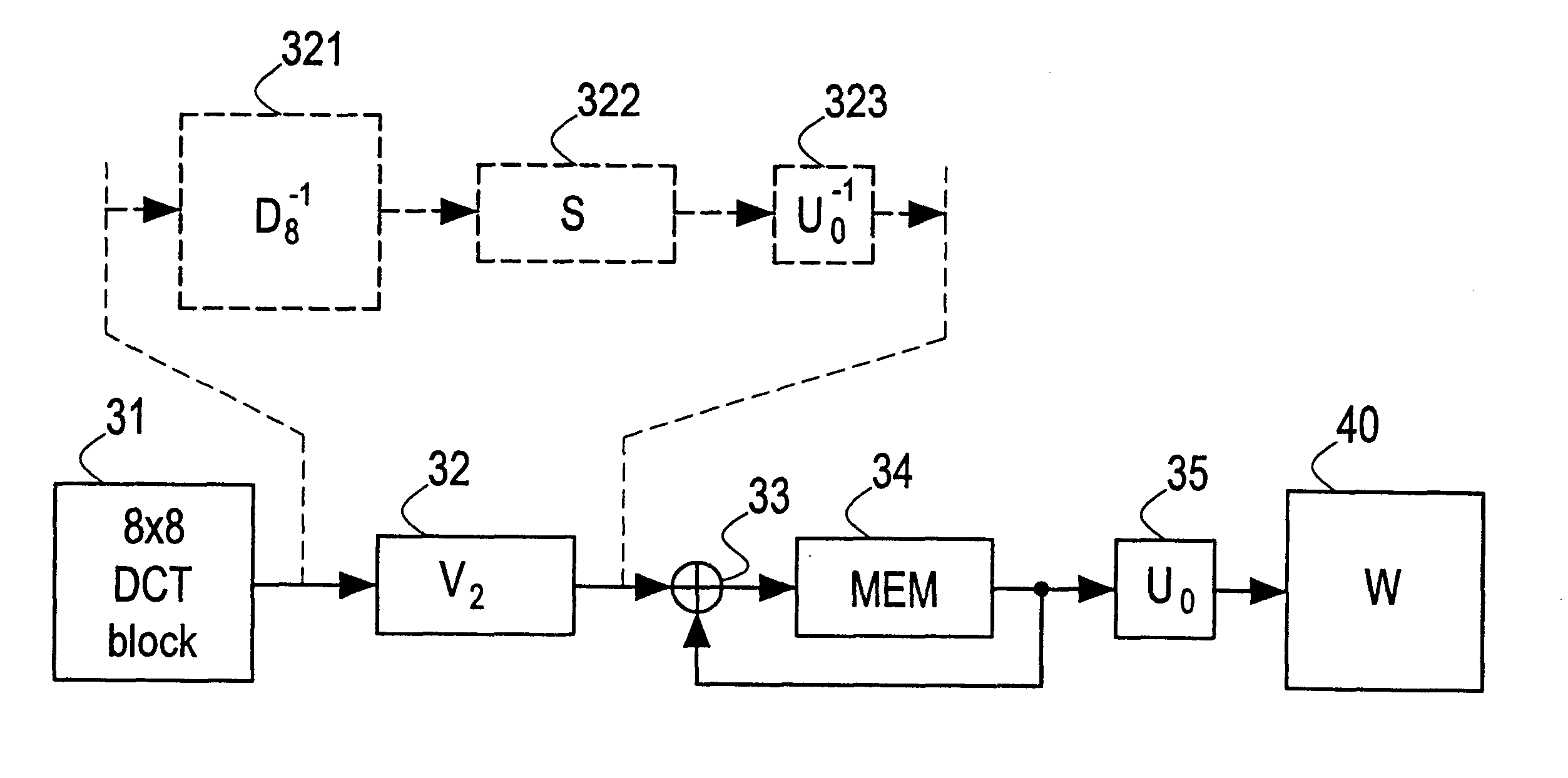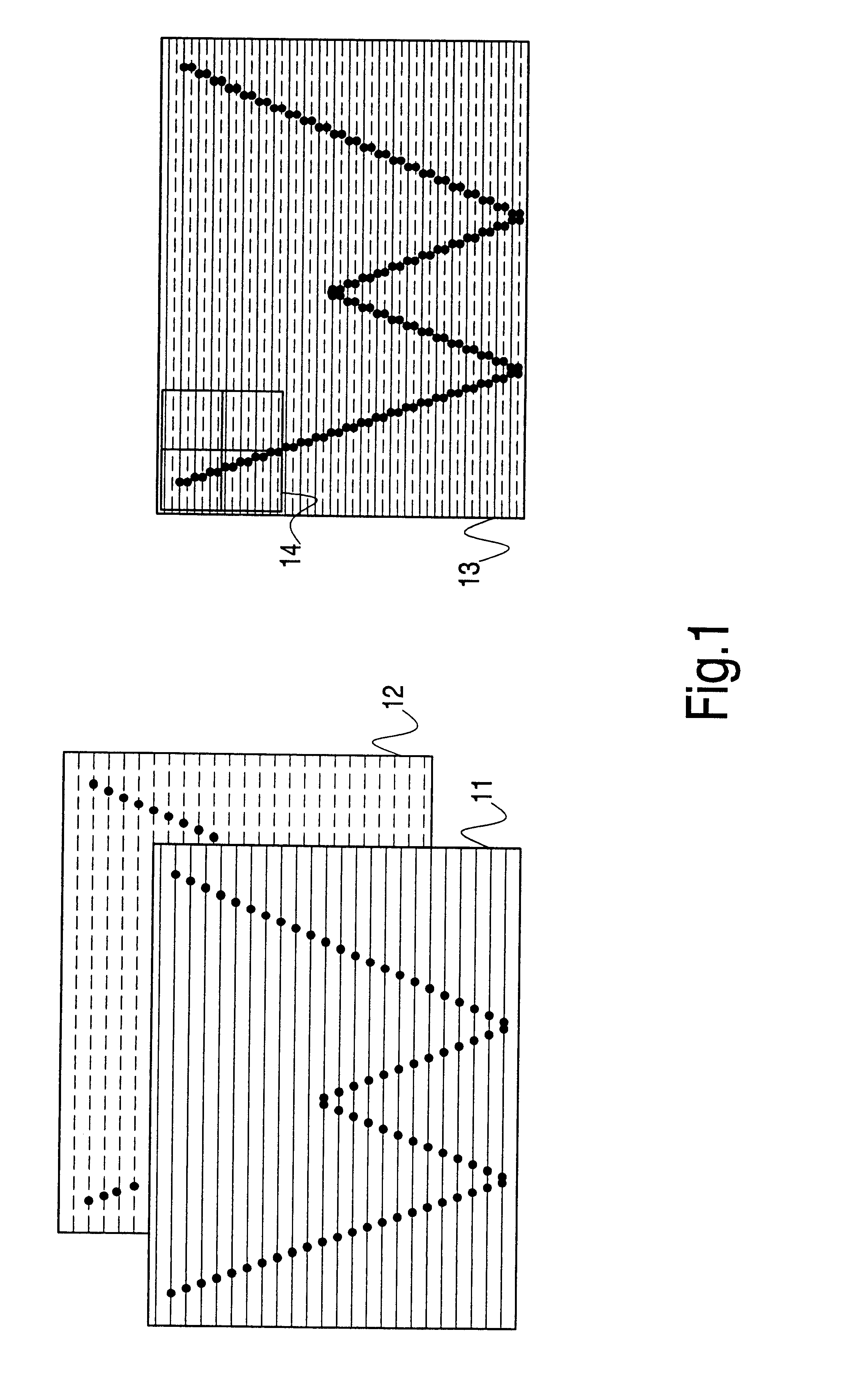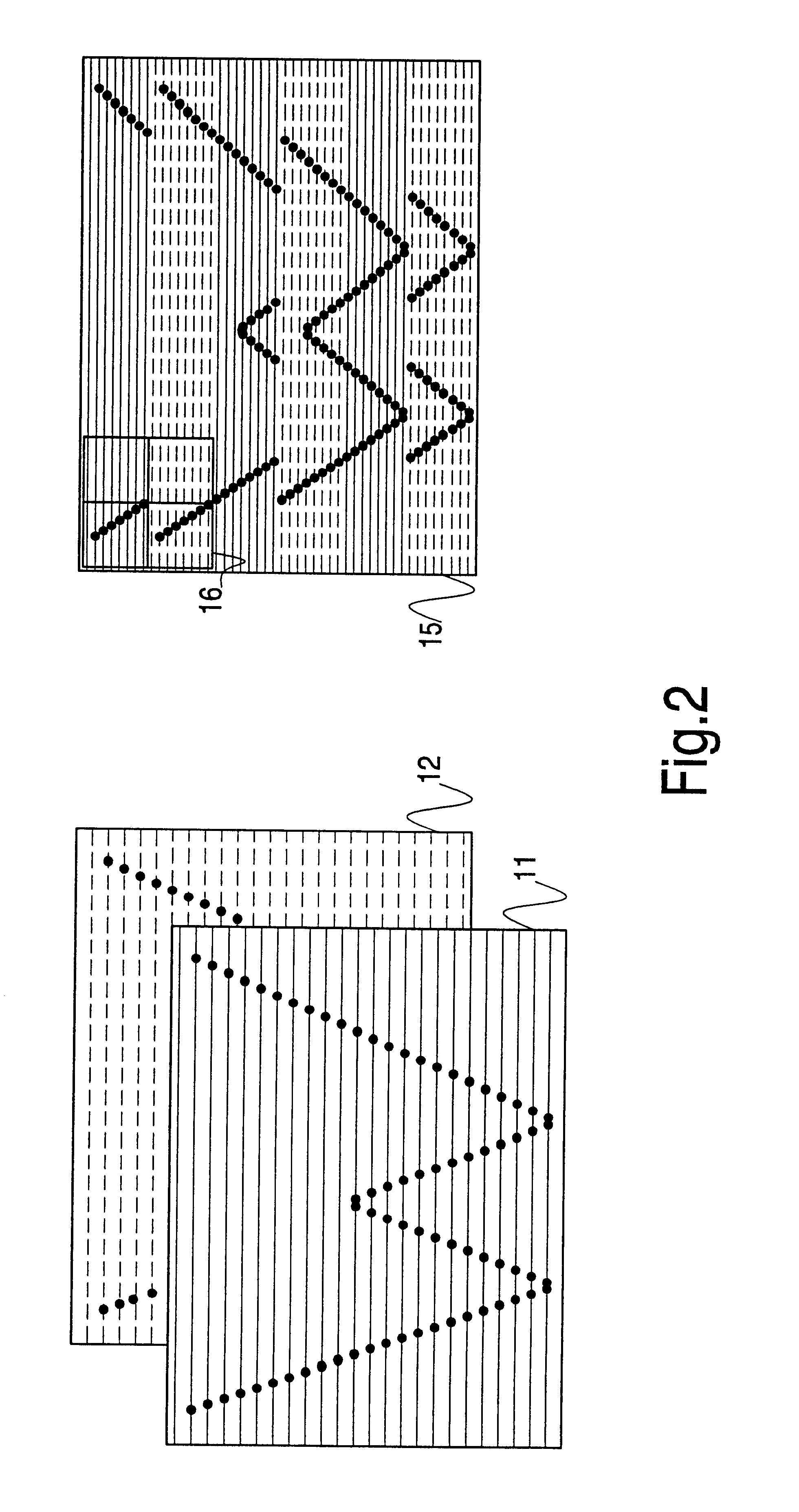Adding fields of a video frame
a technology of video frame and field, applied in the field of adding fields of video frame, can solve the problems of inability to easily combine the above-mentioned solutions with the simple solution, neither attractive from the implementation point of view, etc., and achieve the effect of convenient implementation
- Summary
- Abstract
- Description
- Claims
- Application Information
AI Technical Summary
Benefits of technology
Problems solved by technology
Method used
Image
Examples
Embodiment Construction
FIG. 3 shows a schematic diagram of an arrangement for accumulating a plurality of frame-encoded macroblocks according to the method of the invention. The arrangement receives an 8.times.8 frame-encoded DCT block 31 (i.e. one of the blocks from macroblock denoted 14 in FIG. 1). The DCT block is multiplied 32 with an 8.times.4 sparse matrix V.sub.2. This multiplication yields an 8.times.4 block of intermediate values, which is indicative of the sum of the two fields. An adder 33 and a memory 34 accumulate as many intermediate blocks as necessary for the application in question (e.g. watermark detection). Upon completion of the accumulation, the accumulated blocks are subsequently subjected to an inverse basis transform by multiplication 35 with a matrix U.sub.o. Finally, the actual application (here watermark detection 40) is carried out.
Note that the accumulation memory 34 in FIG. 3 is an 8.times.4 memory (in the Figure, each element has been drawn in proportion with the actual matr...
PUM
 Login to View More
Login to View More Abstract
Description
Claims
Application Information
 Login to View More
Login to View More - R&D
- Intellectual Property
- Life Sciences
- Materials
- Tech Scout
- Unparalleled Data Quality
- Higher Quality Content
- 60% Fewer Hallucinations
Browse by: Latest US Patents, China's latest patents, Technical Efficacy Thesaurus, Application Domain, Technology Topic, Popular Technical Reports.
© 2025 PatSnap. All rights reserved.Legal|Privacy policy|Modern Slavery Act Transparency Statement|Sitemap|About US| Contact US: help@patsnap.com



